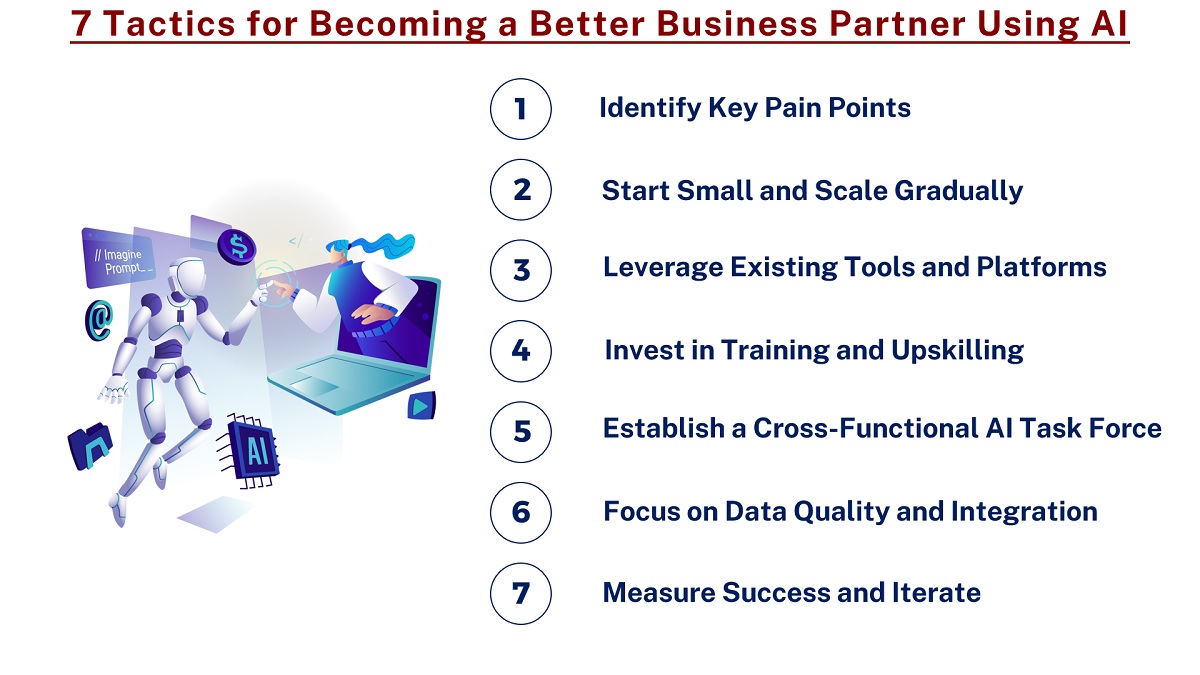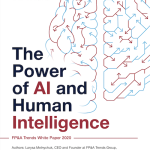To bring some perspective to this position of AI within the context of FP&A activities, the...

FP&A extends beyond managing numbers. It's about strategic partnership within the business, driving growth, and efficiently steering the company towards its objectives.
Artificial Intelligence (AI) offers tools and capabilities that can significantly enhance the strategic role of finance professionals.
By leveraging AI tools such as Python, ChatGPT, and Microsoft Copilot, FP&A professionals can automate mundane tasks, generate insightful forecasts, and, ultimately, become invaluable Business Partners.
I have been teaching fellow professionals how to use advanced ChatGPT for finance since the previous year, and it’s amazing to see all the relevant use cases in our industry and all the potential for these technologies.
But where and how to start?
Embracing Automation for Efficiency
Automation is the first step toward transforming the FP&A function.
Artificial Intelligence (AI)/Machine Learning (ML) algorithms can handle repetitive tasks such as data collection, transaction classification, and even certain levels of reporting.
This not only reduces the risk of human error but also frees up valuable time for finance professionals to focus on more strategic aspects of their roles.
Python, with its vast ecosystem of libraries like Pandas and NumPy, allows for manipulating financial data at scale, automating workflows that once took hours or days to complete.
Leveraging AI for Advanced Forecasting
The heart of FP&A lies in forecasting and analytics.
Traditional forecasting methods often rely on historical data and linear assumptions, which can miss the mark in today’s dynamic business environment.
AI, however, can analyse vast datasets, recognise patterns, and predict future trends with a higher degree of accuracy.
Tools like ChatGPT and Microsoft Copilot can assist in generating predictive models and conducting what-if analyses, enabling FP&A professionals to provide deeper insights and more accurate forecasts.
This shift towards Prescriptive Analytics not only improves decision-making but also positions the FP&A function as a proactive driver of business strategy.
Enhancing Collaboration with AI
AI tools can also enhance collaboration across departments. By providing real-time access to financial insights and forecasts, these tools help break down silos, allowing for a more integrated approach to business planning.
Microsoft Copilot, for instance, can summarise financial reports, draft presentations, and even generate email updates for stakeholders, facilitating more effective communication.
This ensures that strategic decisions are based on a comprehensive understanding of the company’s financial health, aligning all departments towards common goals.
Cultivating Strategic Partnership
The ultimate goal of integrating AI into FP&A is to facilitate the transition from a support function to a strategic partner within the business. This involves not just reporting on the numbers but also interpreting them, providing actionable insights, and advising on future direction. AI enables finance professionals to move beyond the confines of traditional financial management, engaging in strategic discussions and influencing decision-making at the highest levels.
Navigating the Challenges
Adopting AI comes with its set of challenges, including data privacy concerns, the need for upskilling, and ensuring the accuracy of AI-generated forecasts. Successful implementation requires a clear strategy. We have to start with identifying areas where AI can add the most value, ensure data quality, and invest in training for the finance team.
It’s also crucial to approach AI as a complement to human judgment, not a replacement, leveraging its insights to inform decisions rather than dictate them.
To help you navigate these challenges, here are 7 tactics to get started with AI tools to become a better Business Partner.

Figure 1
1. Identify Key Pain Points
Begin with identifying the most time-consuming and error-prone tasks within your finance operations.
Whether data consolidation, report generation, or complex financial modelling, pinpointing these areas will help you understand where AI can have the most immediate impact.
2. Start Small and Scale Gradually
Implement AI solutions on a small scale before rolling them out across the entire company.
Choose a pilot project, such as automating a specific report or enhancing a particular forecasting model with AI-driven insights. This allows you to gauge the effectiveness of AI tools in addressing your needs and make necessary adjustments before a wider implementation.
3. Leverage Existing Tools and Platforms
Before investing in new tools, explore AI capabilities within existing platforms your organisation already uses. Many modern financial software suites have built-in AI functionalities. Familiarity with the platform can accelerate adoption and integration into existing workflows.
4. Invest in Training and Upskilling
The successful adoption of AI tools requires a team that is comfortable and proficient in using them. Invest in training programs for your finance team to develop their skills in data analytics, Machine Learning, and the specific AI tools you plan to implement. Encouraging a culture of continuous learning will be key to staying ahead in the rapidly evolving landscape.
5. Establish a Cross-Functional AI Task Force
Create a cross-functional team involving members from finance, IT, and other relevant departments. This task force will lead the AI implementation project, ensuring that the tools are aligned with business objectives, integrated seamlessly with existing systems and that data governance standards are met.
6. Focus on Data Quality and Integration
AI's effectiveness is directly tied to the quality and integration of data it can access. Ensure your data is clean, comprehensive, and easily accessible. This might involve consolidating data sources, investing in data management solutions, or establishing procedures for ongoing data quality assurance.
7. Measure Success and Iterate
Define clear metrics to evaluate the success of your AI initiatives. These could include time saved on financial reporting, improvements in forecast accuracy, or increased satisfaction among internal stakeholders. Regularly review these metrics and gather user feedback to iterate and improve your AI implementations.
Conclusion
For FP&A leaders and CFOs, AI is not just a technological innovation but a strategic enabler.
By automating routine tasks, enhancing forecasting with Prescriptive Analytics, and fostering collaboration, AI tools like Python, ChatGPT, and Microsoft Copilot can transform the finance function into a pivotal Business Partner.
The journey towards AI integration may be complex. However, the potential to drive growth, improve efficiency, and shape strategic decisions makes it a worthwhile endeavour for any finance professional looking to redefine their role in the modern business landscape.
Subscribe to
FP&A Trends Digest

We will regularly update you on the latest trends and developments in FP&A. Take the opportunity to have articles written by finance thought leaders delivered directly to your inbox; watch compelling webinars; connect with like-minded professionals; and become a part of our global community.






